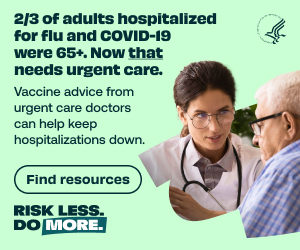Part 1 in a series about the cold, hard numbers behind some of our most common ED practices
{Antibiotics for Mammalian Bites}
Q: Mammalian bites—do antibiotics prevent infections?
a: For bites to the hand, small studies suggest YES
For non-hand bites, small studies say NO
by Andy Neil, MD
NNT
Hand bites, for every 4 patients you treat with antibiotics, one infection is prevented. For bites to other areas, no one seems to be helped.
NNH
Antibiotic side effects were not tracked in the relevant studies
Color Code
Yellow: More research is needed
Take Home Message: The data is thin and better trials are needed, but the best evidence available suggests that for mammalian bites to the hand prophylactic antibiotics will prevent an infection for about one out of every four patients who takes them. For bites to other body parts, antibiotics don’t seem to prevent infections.
Details: Mammals are known to harbor a variety of bacterial species in their oral cavities, and infections in mammalian bite wounds are both potentially aggressive and common. This raises an important question: can antibiotics, when given following a bite but before signs of infection, prevent skin and soft tissue infections?
This systematic review included eight randomized trials (n = 522) six of which (n = 463) enrolled only subjects with dog bites. Overall there appears to be no benefit to antibiotic use. Among the six trials examining only dog bites there was also no benefit (antibiotics – 4% [10/225] versus no antibiotics – 5.5% [13/238]).
Notably, the site of the bite was the most powerful predictor of infection: bites to the hand (3 studies) had a high rate of infection in the control group (28%), and in this small subgroup a benefit to antibiotics was statistically significant (2% [1/61] vs 28% [12/43], NNT = 4). The NNT is calculated by subtracting 2% from 28%. This difference means that roughly one in every four patients (26% of patients) was spared from an infection by the antibiotic.
In addition, since the Cochrane review there has been a further reasonable quality trial addressing the question, which also found a low rate of infection (2%) and no benefit.
Caveats: Overall, the infection rate across studies was low (6.5%) and the number of subjects (522) is small. In addition, the enrolled sample is somewhat selected: superficial grazes and tendon and joint capsule injuries were excluded, and presumably all patients were treated with copious irrigation and wound cleansing. These factors may raise or lower infection rates when compared to wounds seen in community practice. In addition, many agents were used and it is not possible to draw conclusions about specific antibiotics.
The included studies of hand bites are moderate to poor in quality. While it is reasonable in practice to consider this the best available evidence (i.e. to treat for hand wounds), this is a ‘best guess’ and high quality large trials might well change things for both hand wounds and for bite wounds in general.
For the time being, however, these studies are important when considered in the context of the considerable side effect profile of antibiotics, which includes diarrhea, allergic reactions, and increasingly incident clostridium difficile infections.
Data source: Antibiotic prophylaxis for mammalian bites. Cochrane Database Syst Rev. 2001;(2):CD001738.
{Antibiotics for Acute Bronchitis}
Q: When treating acute bronchitis, is it appropriate to use antibiotics?
a: Excellent studies say ‘NO‘
by Koustav Mukherjee, MD
NNT
For clinical improvement, or “cure” at follow-up visits, there was NO BENEFIT.
NNH
For antibiotic side effects, the number needed to harm was 37.
Color Code
Red: Intervention is more harmful than helpful
Take Home Message: Given the prevalence and self-limited nature of this illness, the costs and side effects of antibiotics, and the emergence of antimicrobial resistance, antibiotic therapy appears more harmful than beneficial for acute bronchitis.
Details: Acute bronchitis is defined as a cough-related illness lasting 1-3 weeks with or without sputum in an individual without chronic lung disease and a normal chest radiograph. It is one of the most common conditions for which patients consult a physician and the most common reasons for seeking care are symptom severity, duration, and interference with daily activities. Less than 10% of cases are thought to be bacterial, few patients cite needing an antibiotic, and most guidelines do not recommend their use in bronchitis. But antibiotics, often broad spectrum, are prescribed for 60-80% of outpatient cases.
Fifteen randomized controlled trials were included in this review. Antibiotics did not increase the number of subjects who were clinically improved or “cured” at follow up. They did however decrease the percentage of patients with cough at a follow up visit (NNT=6). There was also a one half of a day reduction in the duration of cough, days feeling ill, and days of limitations in daily activities. Antibiotics slightly increased the number of patients with adverse effects (NNH=37)
Caveats: The review is comprised of 15 trials, but each outcome is derived from a different combination of trials and a different number of subjects. For example there are only 275 subjects in the analysis of antibiotic impact on cough. In addition, the results of this analysis suggest a half day of symptom reduction which is of little relevance, particularly when over-the-counter cough remedies are likely to be as good as or better than antibiotics for cough.
Also, these trials were aiming to measure a potential benefit, and not focused on harms or adverse effects, and antibiotics are known to have many more common adverse effects than these trials report. Yeast finections, rashes, diarrhea, allergic reactions, and occasional clostridium difficile infections are all major reasons for emergency department visits and morbidity related to antibiotics. Finally, since trials report no serious complications of bronchitis in either group the only projected benefit of antibiotics is symptom reduction, and in this case the potential for cough reduction appears to be too small to be important when compared to the potential harms.
Data source: Smith SM, et al. Antibiotics for acute bronchitis. Cochrane Database of Systematic Reviews 2011, Issue 11
***************
The NNT Explained
The NNT offers a measurement of the impact of a medicine or therapy by estimating the number of patients that need to be treated in order to have an impact on one patient. The concept is statistical, but intuitive. After all, we know that not everyone is helped by a medicine or intervention—some benefit, some are harmed, and some are unaffected. The NNT and the NNH (number-needed-to-harm) tell us how many.
For instance, we can calculate how many people we would need to treat with the fictional hea
rt attack drug “StopAttack” for one person to be helped. Studies tell us that only 10% of patients who get StopAttack die, while 20% of those who receive a placebo die. This means the difference between the drug and a placebo is 10%, which means the drug saved 10% of heart attack victims, or about 1 in every 10. So the NNT is 10.
This means that 80% of patients will survive no matter what (even if they get a placebo). And that 10% will die no matter what (even if they get the StopAttack). So the difference the drug makes is what’s left over after 80% survive and 10% die—another 10%, or 1 in 10.
TheNNT.com is a project designed to make these estimates available for decisions at the bedside, and in conversations with patients. There’s a lot of data out there, TheNNT.com is just a place where it’s easy to find, and easy to use.
-David Newman, MD
Editor-in-Chief, TheNNT.com








